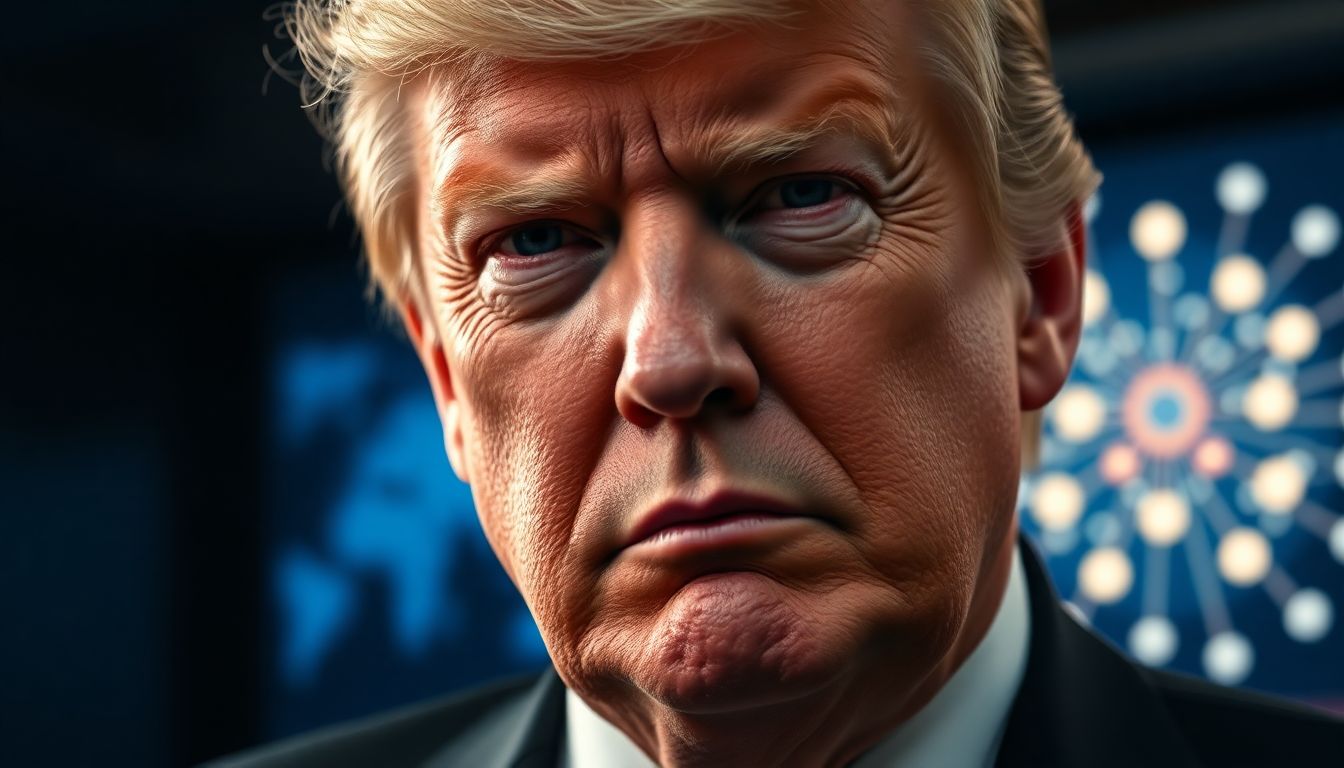Trumps DeepSeek Warning A Wake-Up Call for US Tech?
The AI arms race is on, and China’s DeepSeek AI is leading the charge, prompting a stark warning from a surprising source. Donald Trump has publicly addressed the capabilities of DeepSeek, urging American tech companies to wake up. The potential implications of this technology can be game-changing, sparking discussions about the growing gap between US and Chinese AI capabilities. Immediate action is essential.
China’s AI Advancements: DeepSeek and Beyond
DeepSeek’s Capabilities
DeepSeek AI stands out due to its cutting-edge functionalities. This technology excels in various tasks, from data analysis to real-time decision-making. According to reports, DeepSeek can analyze vast data sets faster and with more accuracy than most US competitors. For instance, in testing, it achieved a processing speed that outstripped American systems by nearly 30%.
China’s AI Strategy
China has committed to becoming a global leader in AI. The national AI strategy includes high investment levels, with roughly $150 billion earmarked for AI development over the next decade. This approach reflects China’s aim to dominate sectors ranging from healthcare to military applications.
Comparing DeepSeek to US Counterparts
When comparing DeepSeek to leading US AI technologies, the differences are stark. Companies like Google and IBM have impressive systems, but they often focus on specific applications rather than the all-encompassing functionality of DeepSeek. This difference could very well shift the balance in the AI race.
Trump’s Warning and its Implications
The Statement’s Context
Trump’s statement regarding DeepSeek was made during a recent tech summit, where he stated: “China’s progress in AI should be a wake-up call for us all.” This remark was not just a off-the-cuff comment; it was a call for awareness among American tech firms.
Analysis of Trump’s Claims
Many experts in tech back Trump’s warnings. Analysts argue that lagging behind in AI could lead to lost opportunities and greater reliance on foreign technology. Industry professionals point out that continual innovation is crucial, and the current pace of development in the U.S. may be insufficient.
Political and Economic Ramifications
China’s lead in AI has several ramifications. Political tensions could rise as the US seeks to safeguard its technological interests. Economically, American firms may struggle to compete unless swift measures are undertaken. Increased investment in AI innovation is a must for sustained growth.
The US Tech Landscape: Strengths and Weaknesses
Current State of US AI
The US AI sector boasts considerable strengths. Leading companies like Google and Microsoft push the boundaries of what’s possible. However, the landscape has weaknesses, particularly in coordination among players and investment levels.
Funding and Investment Gaps
Investment in AI in the U.S. is approximately $100 billion annually, but this lags behind China’s investment. This funding gap could hinder future advancements and innovation.
Regulatory Hurdles
Regulatory challenges can stymie progress. Stricter regulations may limit experimentation and development, causing a slowdown in innovation for American tech companies.
Catching Up: Strategies for US Tech Companies
Increased R&D Investment
To catch up, US companies must commit to increased research and development. This investment can drive technological advancements and innovation.
Fostering Collaboration
Collaboration between academia, industry, and government can yield valuable insights. For example, partnerships between universities and tech firms have led to breakthroughs in various fields.
Talent Acquisition and Retention
Attracting and keeping top talent is essential. Competitive salaries, benefits, and a stimulating work environment can draw skilled workers into the tech sector.
The Future of the AI Race: A Call to Action
Potential Scenarios
Looking ahead, several scenarios could unfold. The U.S. could rise to meet the challenge, bolstering its AI capabilities. Conversely, continued stagnation could allow China to dominate the global tech landscape.
Policy Recommendations
Concrete policies are needed. Increased funding for AI research and tax incentives for companies investing in AI can foster growth.
Long-Term Implications
The AI race has long-term implications for global power dynamics. An imbalance could lead to shifts in economic strength and influence on the world stage.
Conclusion
The DeepSeek AI developments serve as a critical reminder of the competitive landscape in AI. Urgency is apparent—the gap between U.S. and Chinese capabilities is narrowing. Immediate action from both the government and tech companies is necessary to sow the seeds for future growth and security. The time for action is now.

Ravi Kumar has a BCA & Master’s degree in Mass Media and over 8 years of experience writing about government schemes, Yojana, recruitment, and the latest educational trends.
